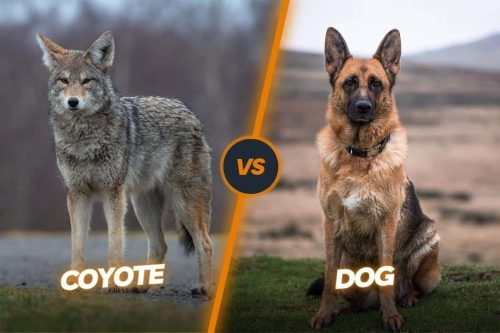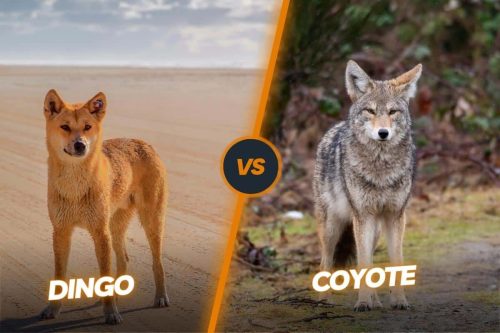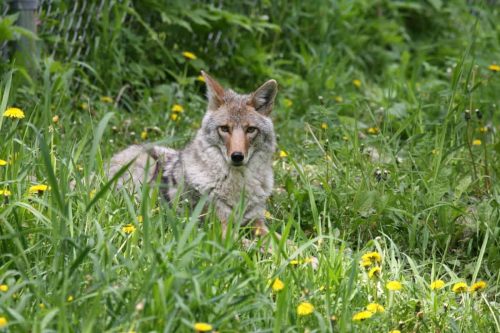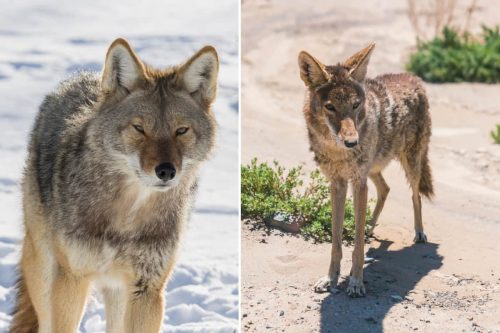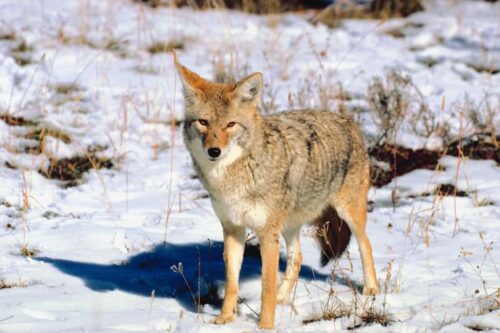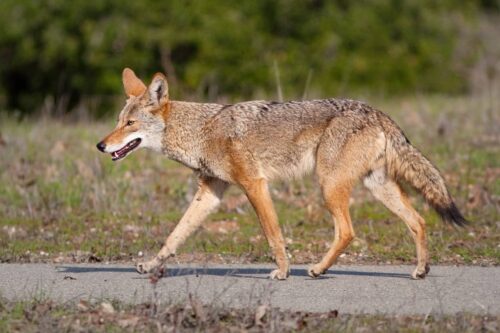Coyote Mating Season: When, Whys, And Hows Of Breeding
Coyotes as you know very well have become a very important part of the ecosystem, especially in the North American continent. Being highly adaptable creatures, they are continuously expanding their territorial range from North Canada to Mexico in the South. Till now, they have been very successfully able to maintain their population throughout the continent despite being hunted on a very large scale for various reasons. Now, it has become quite a common spot for coyotes in every state of the USA.
Being such an important animal, it is very important to know all about its activities. In this regard, the coyote mating season is also one of the most important things to understand regarding the coyote lifestyle. Normally, this mating season starts in late January and ends at the start of March and you can see coyotes most active during this time of the year.
In this article, we are going to discuss in detail the coyote’s breeding season and what habits they generally have. We will also let you know about all the tips which would be extremely helpful in preventing conflict with these wild dogs.
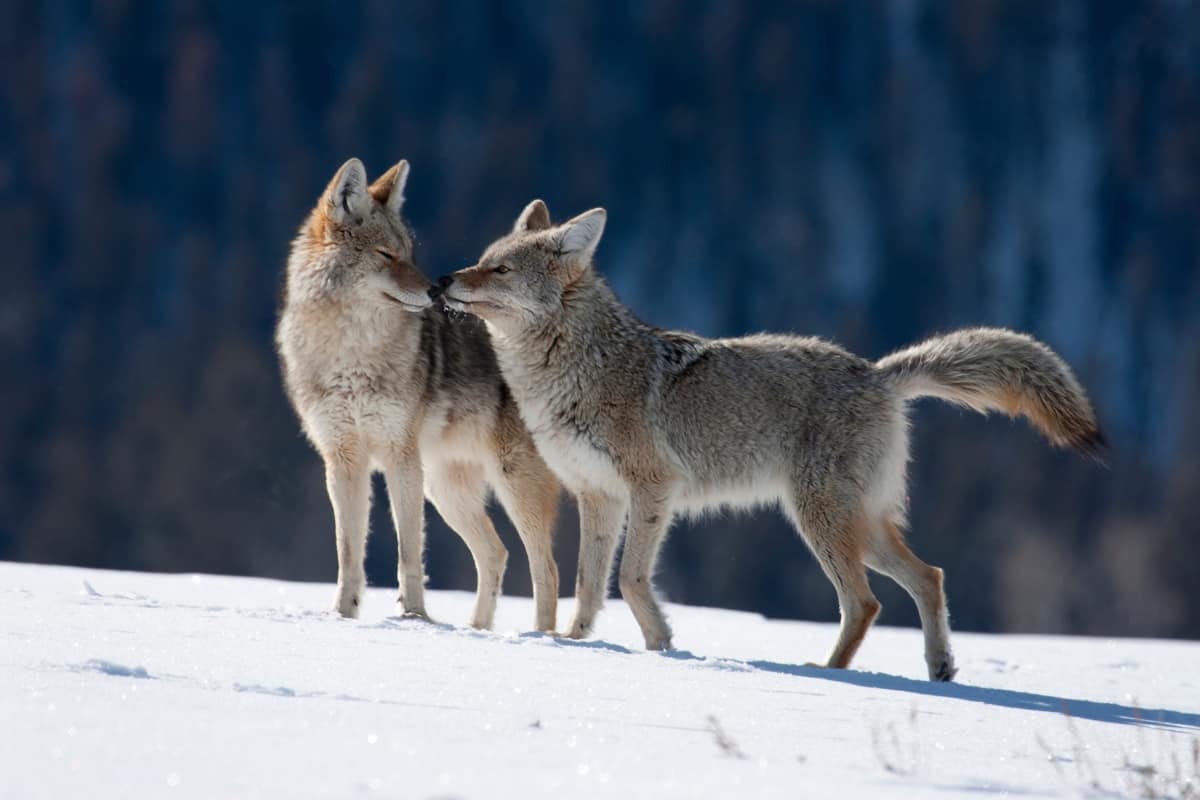
Contents
When is coyote mating season?
Coyote mating season can vary depending on the specific region and environmental conditions, but it typically occurs in late winter to early spring. In North America, the mating season for coyotes often takes place between January and March, with February being a peak month for mating. Overall, the mating season of the coyote lasts 4 to 6 weeks. Keep in mind that these timeframes can vary due to factors such as climate, food availability, and geographic location. In the initial phase of their life, the seasons are followed by mating, raising, and finally dispersal.
Mating habits of the coyote
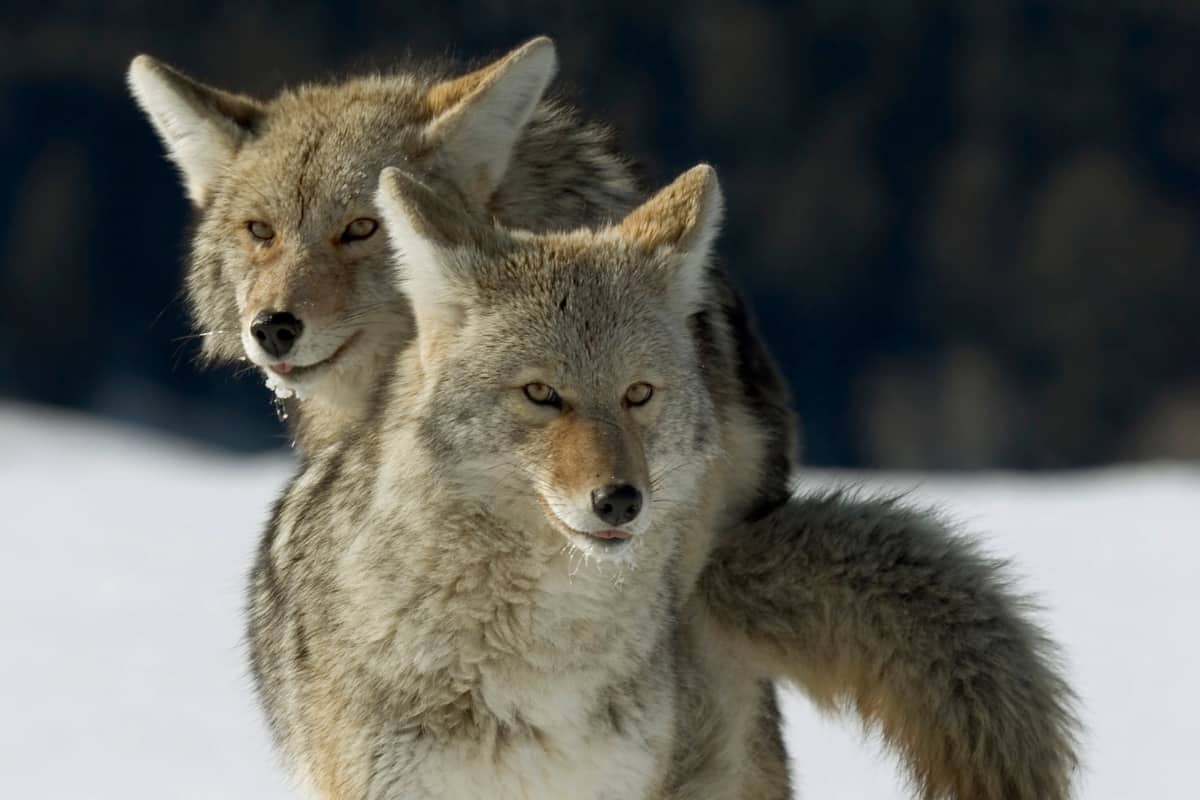
Coyotes are highly adaptable and resourceful animals with interesting mating habits. Here’s an overview of their mating behavior:
Monogamous
Coyotes are typically monogamous, forming strong pair bonds that can last for several years. They are known to be cooperative breeders, with the male and female working together to raise their offspring. In some cases, other older siblings or non-breeding adults might also help in raising the young. Mating happens when they lock together for at least 20 minutes. They don’t leave their companion during this time and only go their separate way if they face food scarcity. Male guards the female throughout the time of heat.
Courtship
Coyotes engage in courtship behaviors to establish and strengthen their pair bonds. These behaviors can include mutual grooming, playful interactions, and even sharing food.
Territorial Behavior
Coyotes are territorial animals, and they will defend their territories against other coyotes. During the mating season, a pair of coyotes might howl and vocalize more to communicate their presence and boundaries to other coyotes.
Den digging
During the time of Birth, the female coyote wants to be alone or find an alternative home. For this purpose, they dig their own den separately. The male coyotes don’t go inside this area and guard the area from outside until the week before delivery. They also provide food during this period. Female coyotes take at least a week from giving birth to coming out of their den.
Mating Ritual
The mating ritual of coyotes can involve various behaviors such as chasing, play-fighting, and vocalizations. The female often initiates mating by engaging in playful behavior, such as running away from the male, enticing him to chase her.
Coyote Gestation period
After successful mating, the female coyote undergoes a gestation period of about 60 to 63 days. She then gives birth to a litter of pups, which usually ranges from 3 to 12 pups, depending on factors like food availability. The male often assists in providing food for the female during her pregnancy.
Raising Pups
Both the male and female are involved in caring for the pups. They provide food, and protection, and teach the young coyotes important survival skills. The pups are weaned at around 5 to 7 weeks of age and start venturing out of the den.
Dispersal
As the pups grow older, they eventually disperse from their natal territory to establish their own territories and find potential mates, contributing to the coyote population’s genetic diversity.
Hunting
Pups remain hidden in the den and rely on their parents for food and all other things. Initially, they go out in the form of a pack with their parents and learn about hunting and survival skills. After learning these skills, they go out on their own and go on their expeditions.
These are common behaviors, but there can be variations in coyote mating habits due to factors like geographic location, habitat, and environmental conditions. Coyotes’ adaptability has allowed them to thrive in various habitats, from rural areas to urban environments, leading to some behavioral differences based on their surroundings.
Tips for preventing conflict with the coyotes during mating season
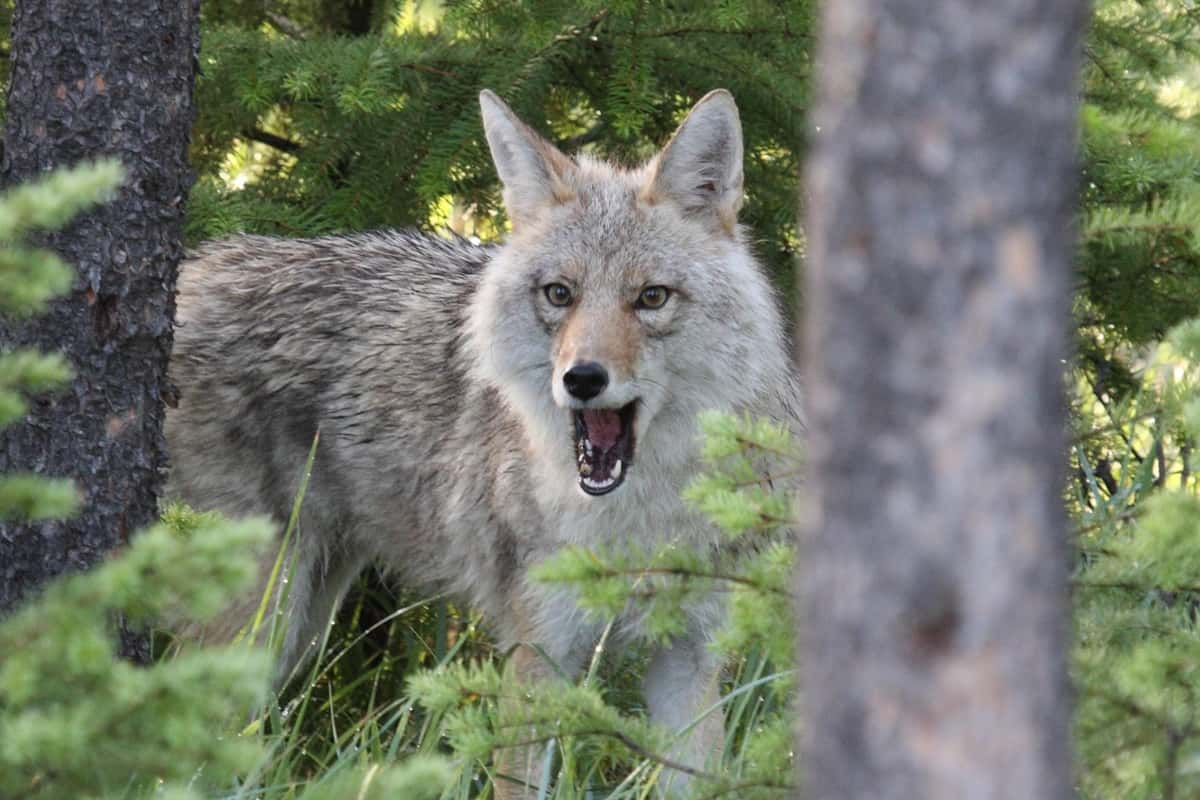
Preventing conflicts with coyotes during their mating season requires a combination of understanding their behavior, implementing proactive measures, and promoting coexistence. Here are some steps you can take to minimize conflicts:
Coyote mating season in Texas
In Texas, coyote mating season generally occurs during the late winter to early spring months, which is consistent with the timing in many other regions. Specifically, coyotes in Texas tend to mate between January and March. During this period, you might observe increased coyote activity, including more vocalizations as they communicate with potential mates. Keep in mind that while this is a general timeframe, variations can occur based on local conditions, such as weather and food availability.
Do coyotes mate for life?
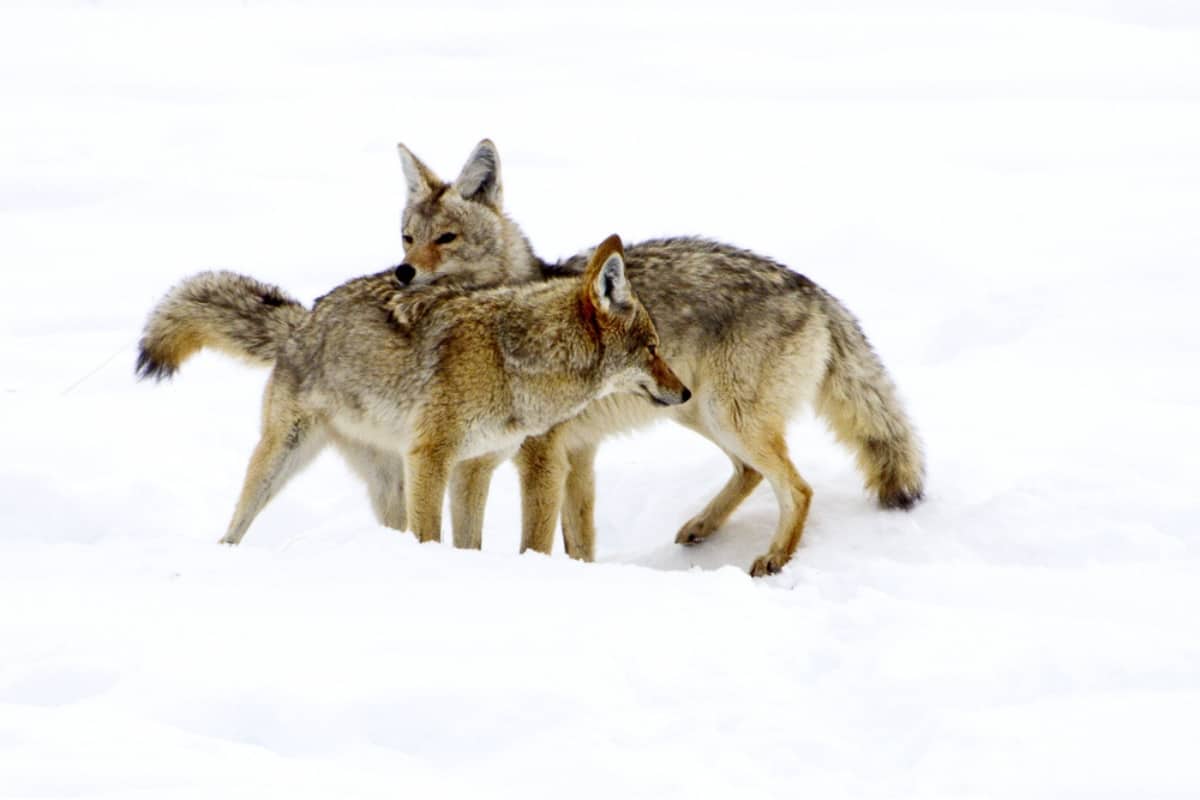
Coyotes typically exhibit strong pair bonds, which can last for several years, but they are not strictly monogamous in the sense of mating for life like some other species, such as swans. Coyotes are known to be monogamous in the sense that they form pairs during the breeding season and often stay together to raise their pups, which helps in providing care and protection for the young.
However, these pair bonds can change over time, especially if one of the individuals dies or if there are changes in the local coyote population dynamics. In some cases, coyotes might find new mates after the loss of a partner or during subsequent breeding seasons. So, while coyotes do form strong and long-lasting pair bonds, their mating relationships are not necessarily lifelong commitments like in some other animal species.
Frequently asked questions
Conclusion
As winter transitions into spring, typically from January to March, coyotes undergo a transformation that sees them become more vocal, territorial, and focused on establishing strong pair bonds. It usually happens as the coyote mating season draws to a close. In this period, the coyote life cycle continues with new generations of pups born in the dens, nurturing their curious spirits and setting the stage for the ongoing balance of nature. In this article, we have explained in detail the mating season of the coyote and all the complexities involved with it.

Izzy is an experienced ranch worker who has a passion for exploring nature and getting up close to wildlife. With her connections to various animal organizations, Izzy is well-versed in animal care and rehabilitation.

